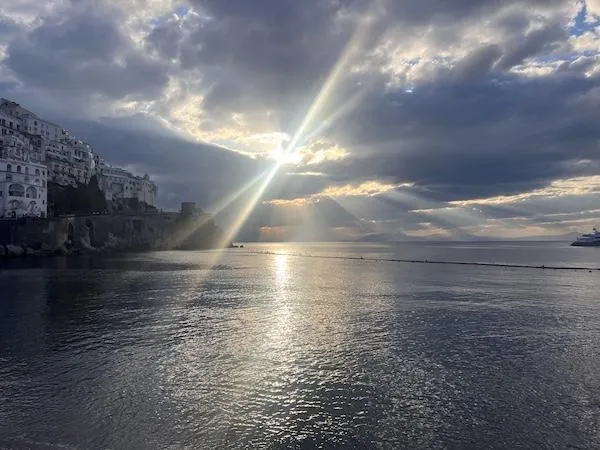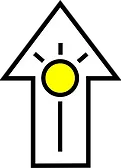
Empathy Isn't a Buzzword — It's the Bridge Back to Our Humanity
We talk a lot about empathy, but not always about what it really means — or what it asks of us. This is a reflection on the deeper layers of empathy: the kind that heals instead of depletes, that sees even those who harm as unwell, and that imagines a world too healthy for cruelty to thrive.
“Empathy is the ability to detect another’s emotions and understand their perspective.”
— Desmond Tutu & the Dalai Lama, The Book of Joy
Empathy as the Root of Our Humanity
Today, I’m grateful to be me — to feel many things all at once.
I’m grateful for the ability to attune to my surroundings, to the people around me, and to the world at large.
Empathy isn’t a trend or a “new age” concept. It’s not something reserved for the overly sensitive or spiritually inclined. It’s the essence of being human.
Psychologists like Daniel Goleman and Paul Ekman have spent decades studying emotional intelligence and empathy. Their research confirms what many of us already sense — empathy is wired into our biology to help us connect, survive, and thrive together.
And we’ve always known this, long before science gave us words for it.
Think of the way an attuned caregiver senses a child’s needs without a single sound being made. A baby shifts its breath, and something in the adult quietly responds. The child’s nervous system speaks, and the caregiver’s nervous system listens. That isn’t weakness — it’s wisdom. That wordless knowing is empathy in motion: ancient, protective, relational, and deeply human.
It’s worth remembering — what many now call “toxic empathy” is often not empathy at all, but unhealed pain merging with someone else’s. Genuine empathy doesn’t demand that we drown in another’s experience. It simply allows us tofeel with— to remain present, compassionate, and discerning. Genuine empathy is not self-abandonment. It’s regulated connection with boundaries intact.
So empathy isn’t new, and it isn’t fragile.
It has always been part of how we love, how we survive, and how we care for one another.

But when I was younger, feeling deeply often felt like a burden. It was exhausting. I didn’t yet understand that the pain wasn’t caused by empathy itself — it came from my own unhealed wounds.
When our skin is raw, the world can feel like sandpaper. Everything rubs.
Healing changes that.
As we tend to our pain, empathy doesn’t fade — it becomes clearer, steadier.
We learn how to feel without being consumed.
We learn to hold compassion and discernment at the same time.
Unwellness, Not Evil
Here’s what I’ve learned:
People who harm aren’t always “bad.” They’re unwell.
That doesn’t excuse the harm — but it helps explain it. Much of what we call “evil” is actually disconnection, confusion, and pain passed down through generations.
All this protecting ourselves from one another — the walls, the fear, the distrust — came from misunderstanding what safety really is.
And I even have a heart for how that came to be. Because we are humans, learning and making mistakes.
It’s not good versus evil; it’s wellness versus unwellness. When we start to see through that lens, empathy stops being sentimental — it becomes a radical act of clarity.
We don’t need a future with stronger walls.
We need one where illness — emotional, relational, systemic — is healed before it hardens into harm.
That’s what teachers like Jesus, Buddha, and so many others were really trying to show us: compassion, even toward those who harm, isn’t naïve. It’s transformative.
Because honestly, there’s nothing to protect ourselves from that love can’t reach. We could die tomorrow from a thousand things — the point isn’t to survive everything. It’s to live well today.
Maybe that’s the more profound truth: at the highest level, there’s nothing to protect ourselves from. But on the human level, protection still serves a purpose while we’re healing. Boundaries are not barriers — they’re bridges to balance.
The goal isn’t to harden or hide; it’s to grow so whole that protection becomes discernment. From that place, safety isn’t something we defend — it’s something we create together.
Empathy Isn’t Absorbing Pain — It’s Transforming It
Empathy isn’t about taking on everyone else’s suffering. That kind of overwhelm often happens when we’re still unhealed or disempowered.
True empathy is attunement without drowning.
It’s seeing suffering without losing yourself to it.
It’s choosing compassion over control — again and again.
That choice, moment by moment, is what heals cultures, not just individuals.
A Collective Reflection
The challenges of our time aren’t abstract.
When systems fail, it affects all of us.
When misinformation spreads, it divides people who actually want the same things: safety, dignity, peace, and purpose.
When we reduce each other to labels, we lose sight of how deeply connected we already are.
Across time and faith traditions, teachers like Jesus, Buddha, Rumi, and Dr. Martin Luther King Jr. all pointed to the same truth:
We belong to each other.
And though we’ve fallen behind in practicing that truth, now is a good time to catch up.
How We Begin Again
Here’s what I’m practicing — and what we can all start doing:
Heal first, then feel. Empathy becomes sustainable when we’ve tended to our own pain.
Notice before naming. Understand before labeling.
Ask better questions. “What matters most to you right now?” “What would make this safer, kinder, or more just?”
Hold multiple truths. People can harm and heal in the same lifetime.
Refuse the illusion of sides. There is no “us vs. them.” Only “all of us.”
Stay curious. Truth is not loud — it’s often quiet, and it invites us to listen.
Act small and steady. Kindness, boundaries, apologies, and compassion — these are world-changing acts.
Returning to Our Shared Humanity
Empathy helps us gather what’s been broken — in ourselves, our families, and the world.
It gives us the courage to face what’s wrong without losing faith in what’s right.
We are capable of miracles that look ordinary:
Listening without fixing.
Protecting someone’s dignity when no one’s watching.
Choosing connection over contempt.
That’s how the world changes — one steady, compassionate act at a time.
I trust in us. I believe in humanity.
Not the perfect kind — the practicing kind.
The kind that keeps showing up, learning, and choosing love, even when it’s hard.
So if you’ve ever felt “too sensitive” or “too much,” maybe you’re not too anything.
Maybe you’re exactly what this world needs — tuned in.
Take care of your heart.
Heal what needs healing.
Bring your empathy to the table.
We need it — all of us.
If this speaks to you…
If this message resonates, feel free to explore my work, connect with me, or learn more about empathy-led healing at www.evolvedbeing.com.
Further Reading
Daniel Goleman —Emotional Intelligence
Paul Ekman —The Science of Empathy
Brené Brown —Atlas of the Heart
Thich Nhat Hanh —Being Peace
Desmond Tutu & the Dalai Lama —The Book of Joy

